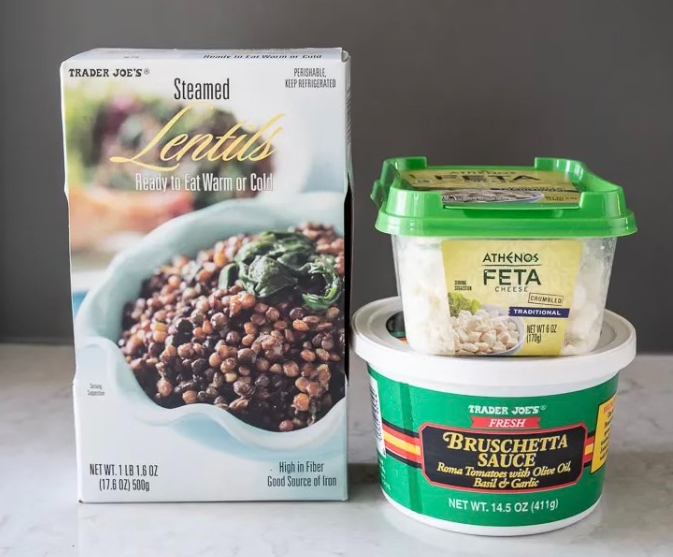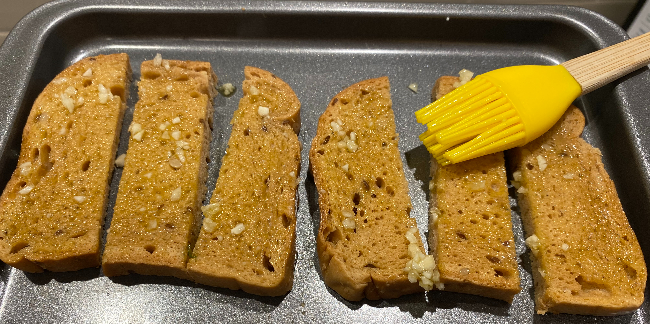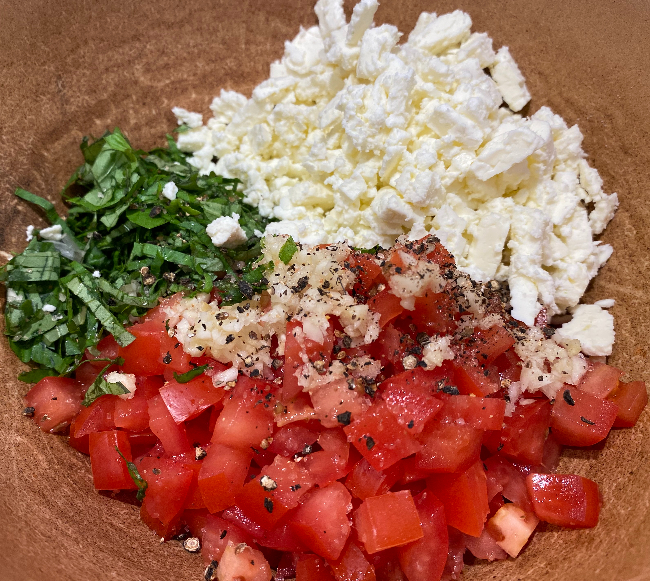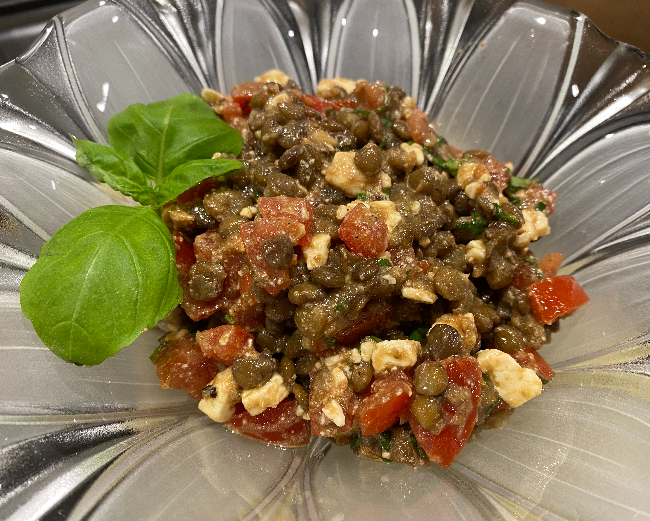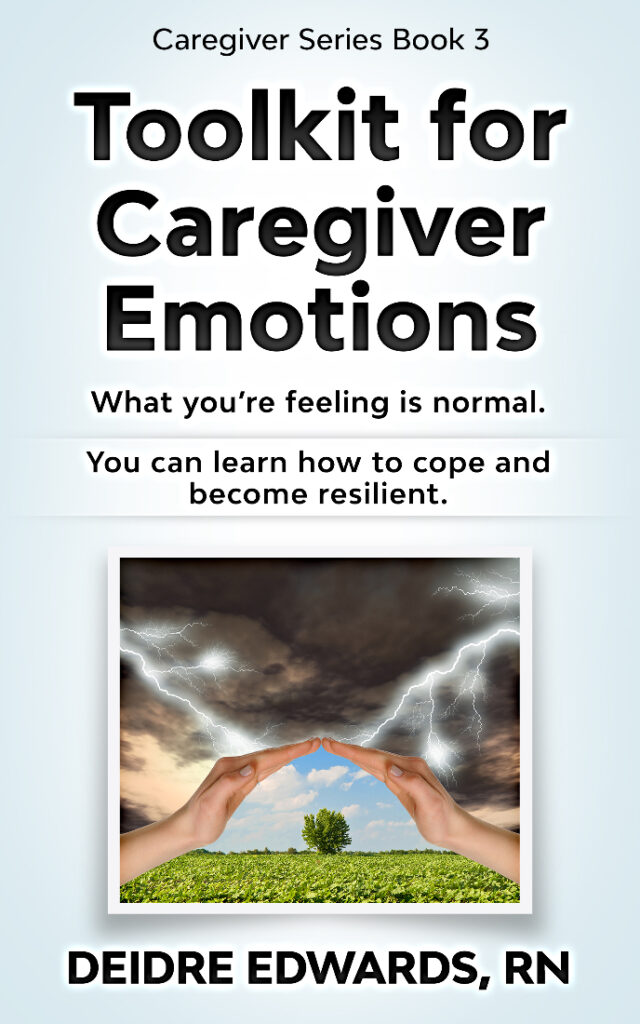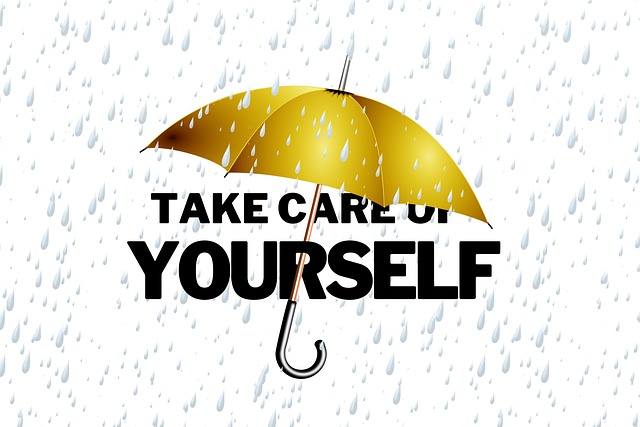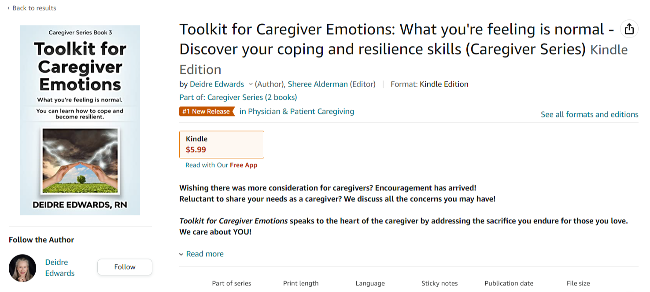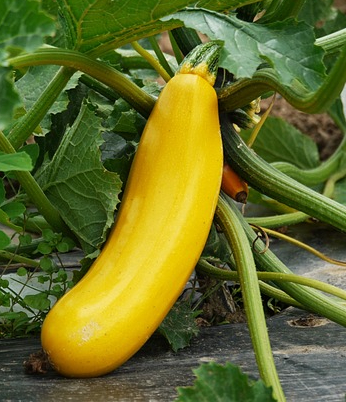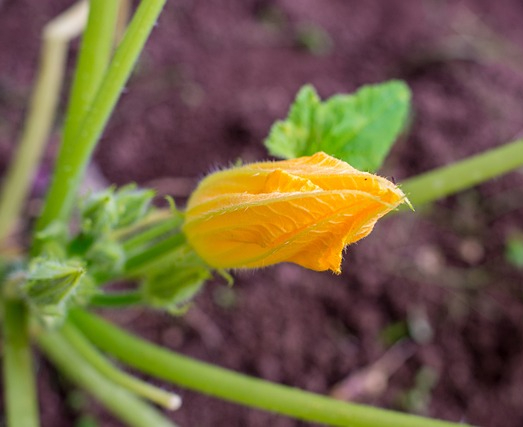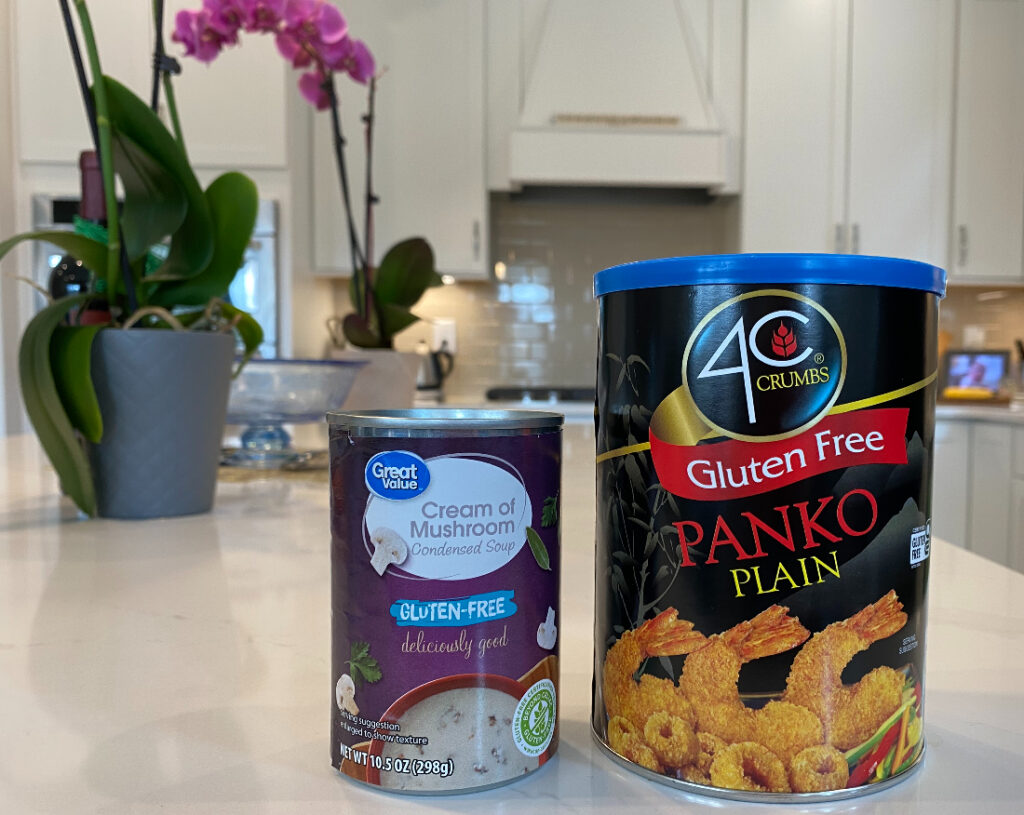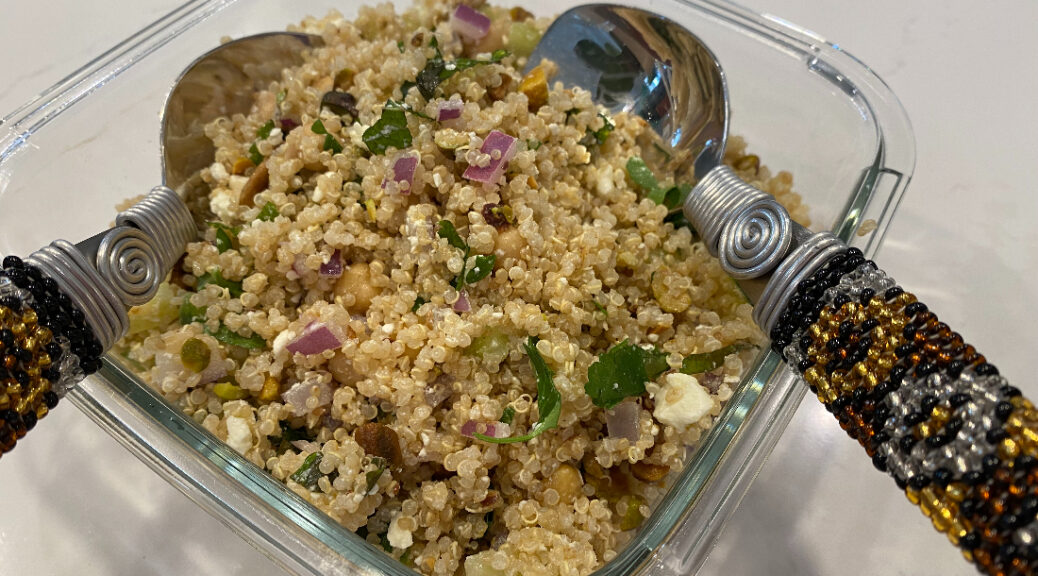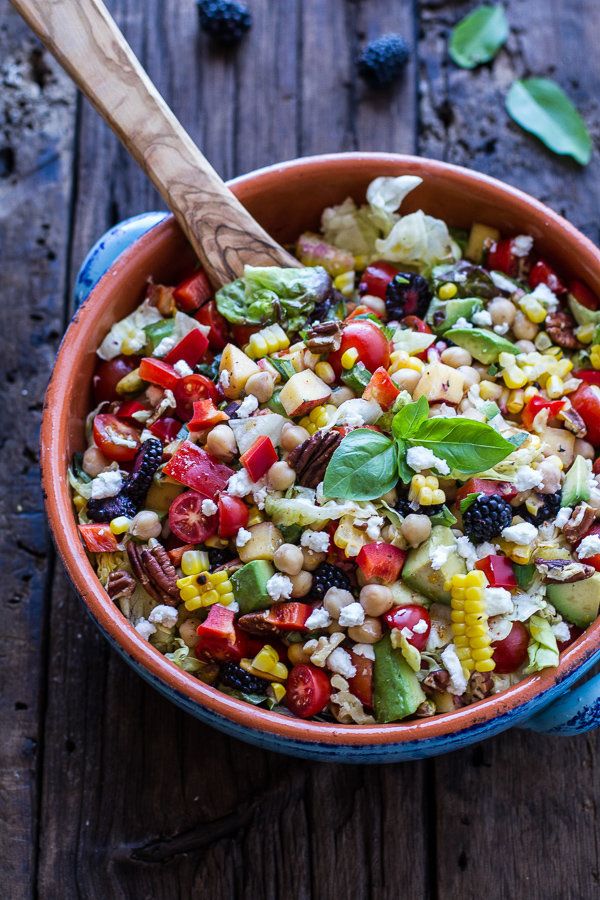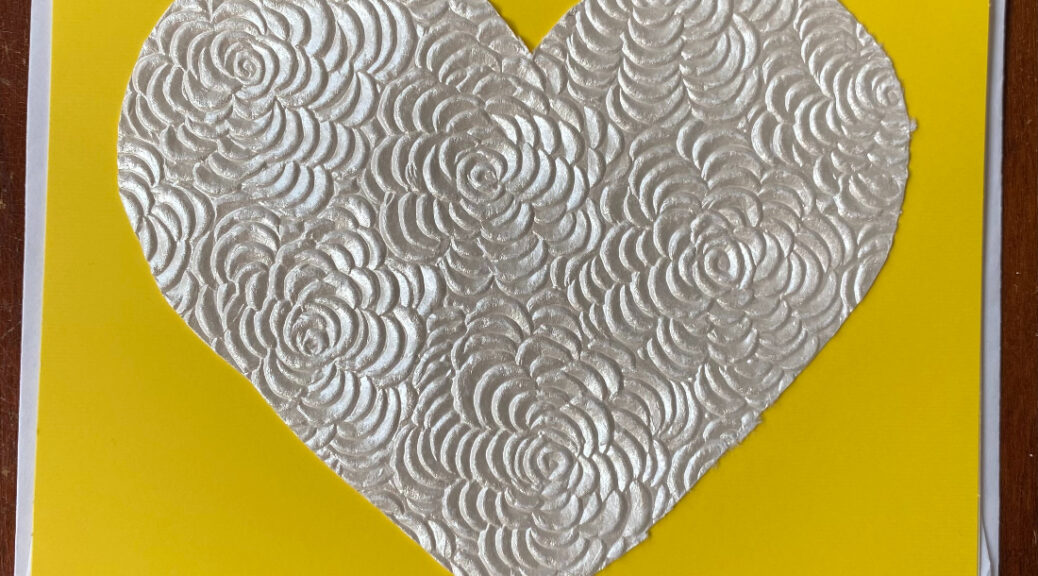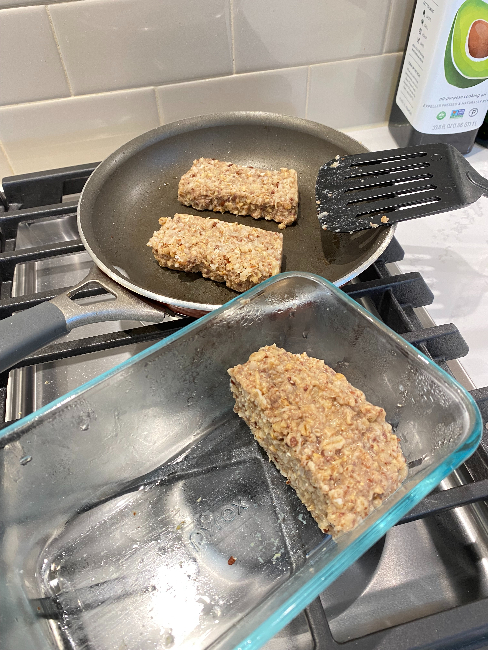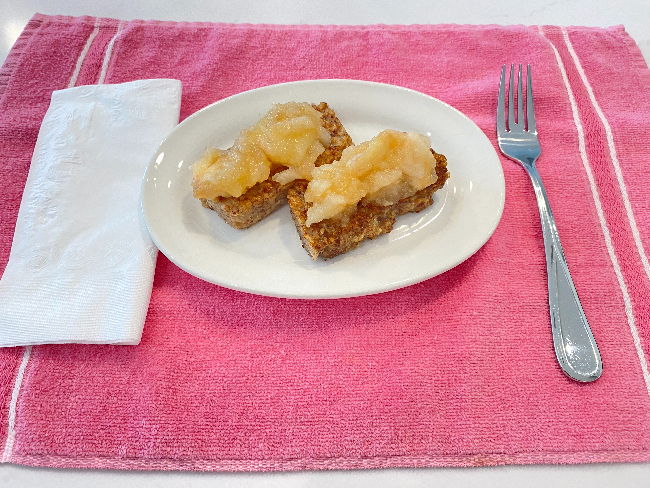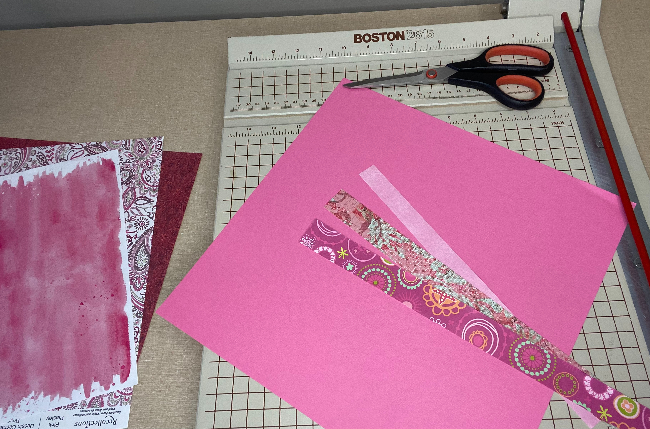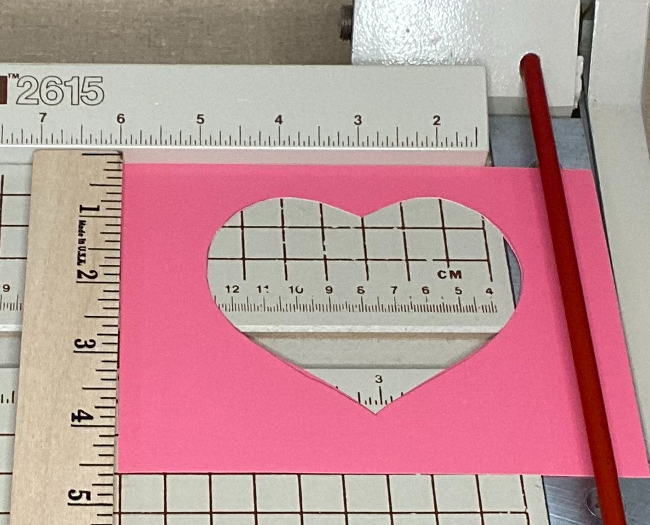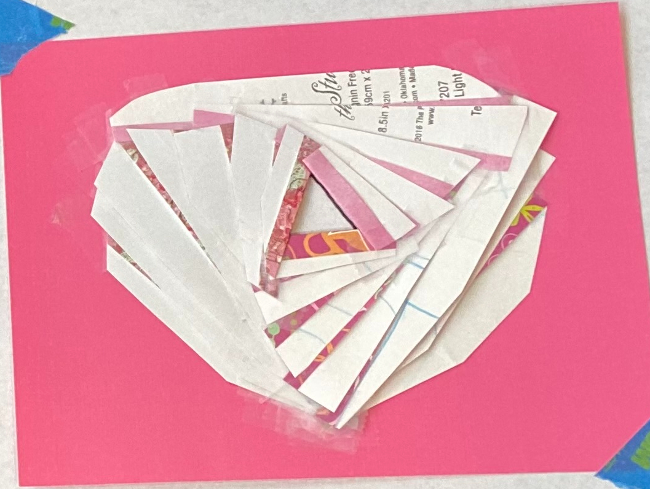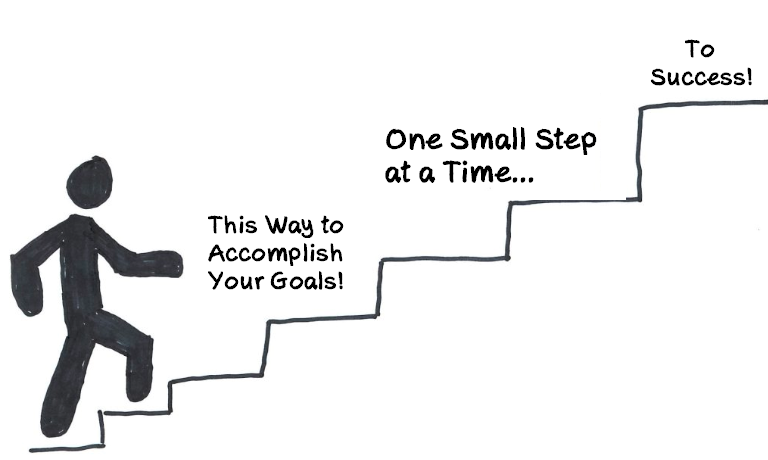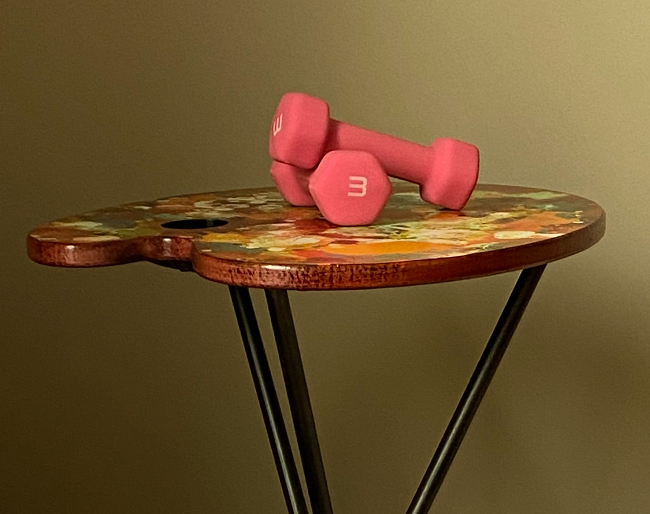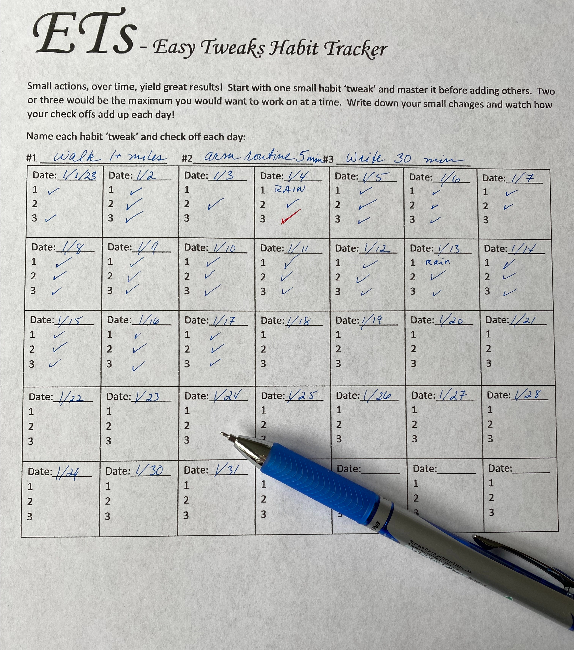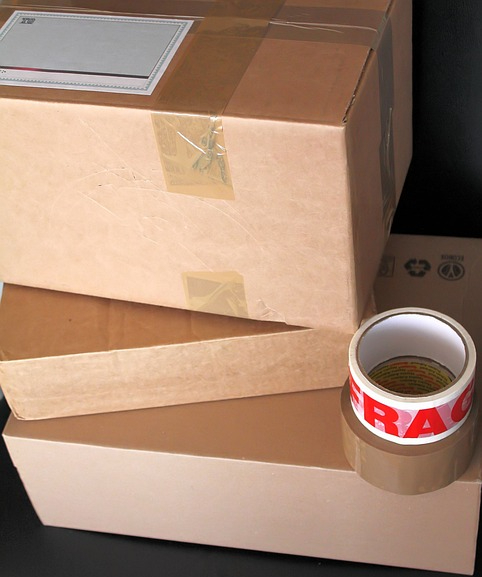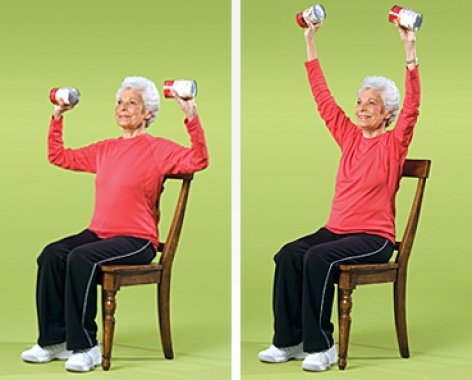Since the ribbon-cutting ceremony we held the day I signed the papers to my new home, we have been known as The Party House!
Thirty-five or so of our neighbors joined us in celebrating this new beginning. Even though the house was bare, it was an event full of love and warm wishes.
My message is this. Don’t wait until everything is perfect and in place to gather with friends.
Some of my favorite memories of home parties through the years, happened before we even had a proper dining room table. Who cares?
What makes a good time is the participants, not the perfect décor.
In that spirit, we had two gatherings last week before our sofa was delivered – and no one missed it.
For both events, my sweetheart’s daughter introduced us to a tasty lentil, Bruschetta, and feta-cheese mixture, suitable for spreading on crackers or toasted bread – also as a handy addition to a green salad.
Apparently, this is a staple recipe from ingredients found at Trader Joe’s.
It was all new to me, and frankly – lentils?
Yes, lentils!
The Trader Joe’s version utilizes their packaged, steamed lentils along with pre-made Bruschetta, and a tub of feta crumbles.
Now, this salad – or spread – will not win any beauty contests. The use of garnish will aid in the presentation; but the taste and satisfaction will greatly counterbalance any visual shortcomings.
Eager to duplicate her concoction, I sought the ingredients at our local grocery store.
Nope.
No precooked lentils. No pre-made Bruschetta. No problem.
Cooking lentils is so easy – no pre-soaking is needed – so I knocked that off my list this morning while fixing breakfast.
Finding a recipe for Bruschetta was easily accomplished while in the store, and ingredients were bought.
There are numerous recipes for homemade Bruschetta; and I have melded a couple to land on the downloadable recipe below.
NOTE: I learned something! One of the most mispronounced culinary words in Italian is Bruschetta. I stand corrected. It’s pronounced “Bru SKET ah,” not “Bru shet ah.” Apparently, the “h” causes the “sc” to have a hard sound – like the ‘’c” in “cat.”
Click HERE to learn how to say Bruschetta by recorded pronouncement.
That’s Italian 101 for today!
Additionally, Bruschetta is a word referring to the toasted bread, not the topping. I did not eat any bread with my lentil mixture, opting, instead, to use gluten-free crackers.
Armed with cooked lentils and homemade Bruschetta, all I had to do was crumble the block of feta I had on hand. Cool thing is, once you have the separate ingredients, this spreadable dip can be made fresh at a moment’s notice and in a quantity of your liking.
So, the lentil salad dip is:
Cooked lentils
Bruschetta tomato mixture
Crumbled feta – along with salt and pepper to taste
Put in a bowl, combine, garnish. Done.
Yum!
This recipe is high in fiber and vegetable protein – and is an instant crowd pleaser.
Enjoy the following recipe for this delicious Bruschetta surprise!
In health –
Deidre
Bon Appétit!




